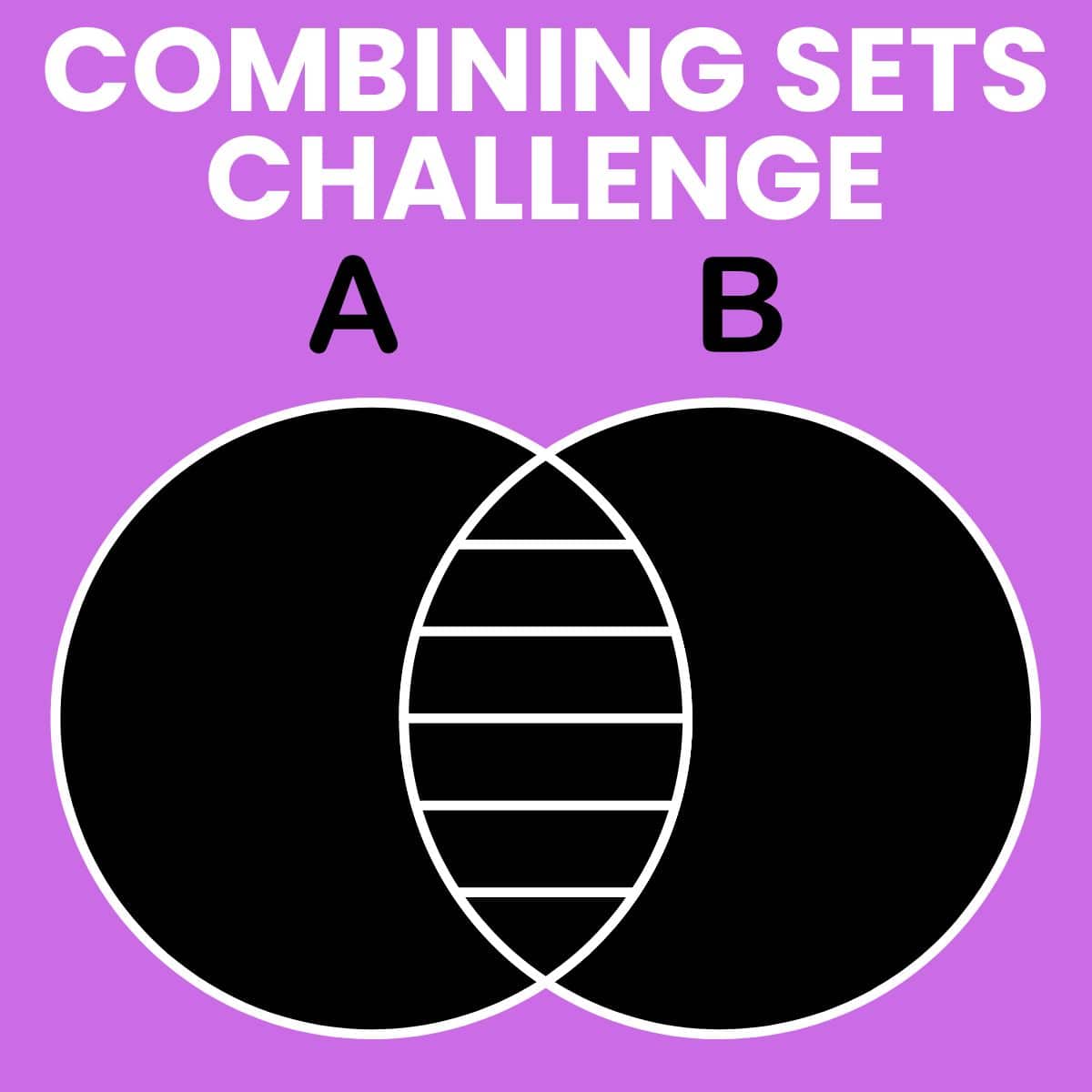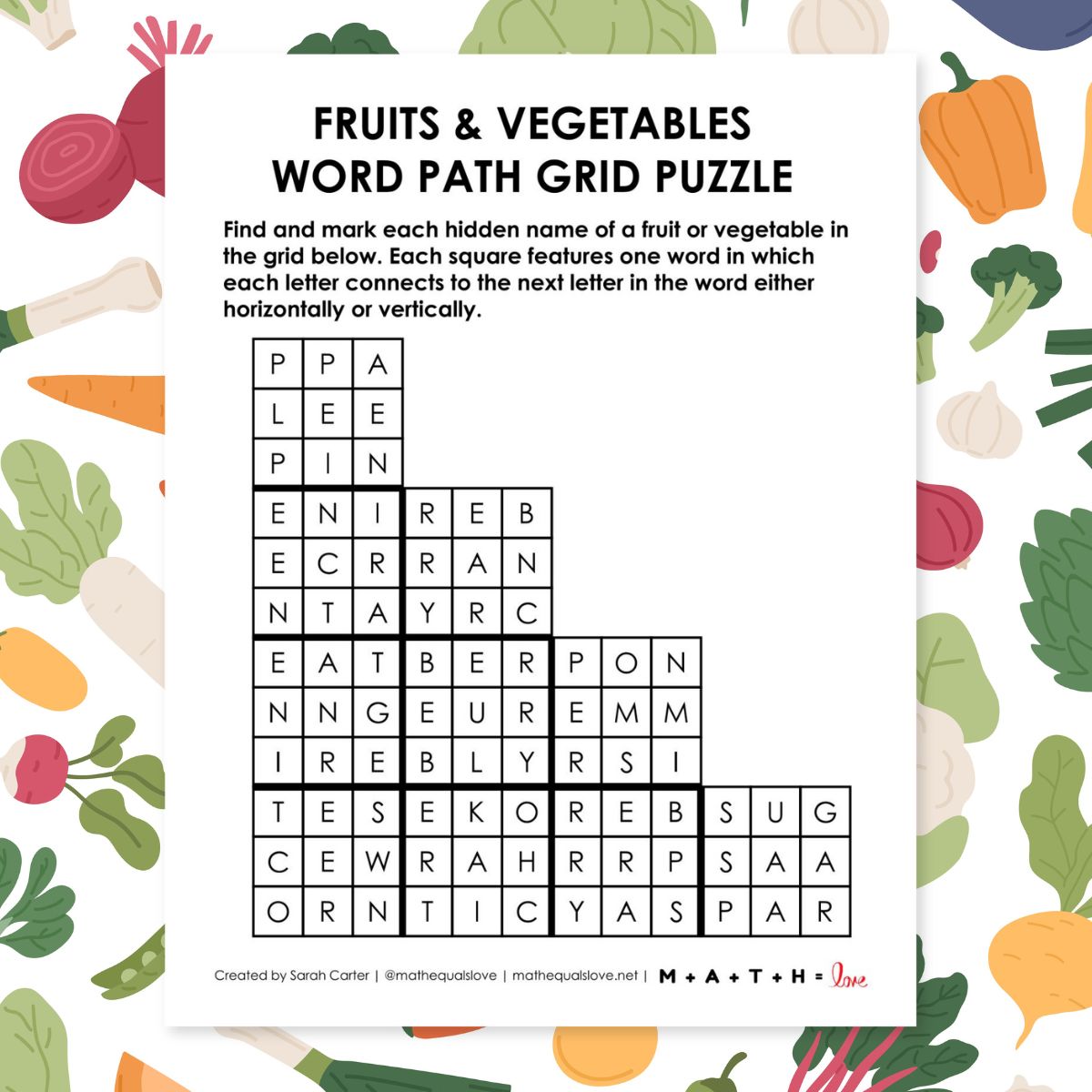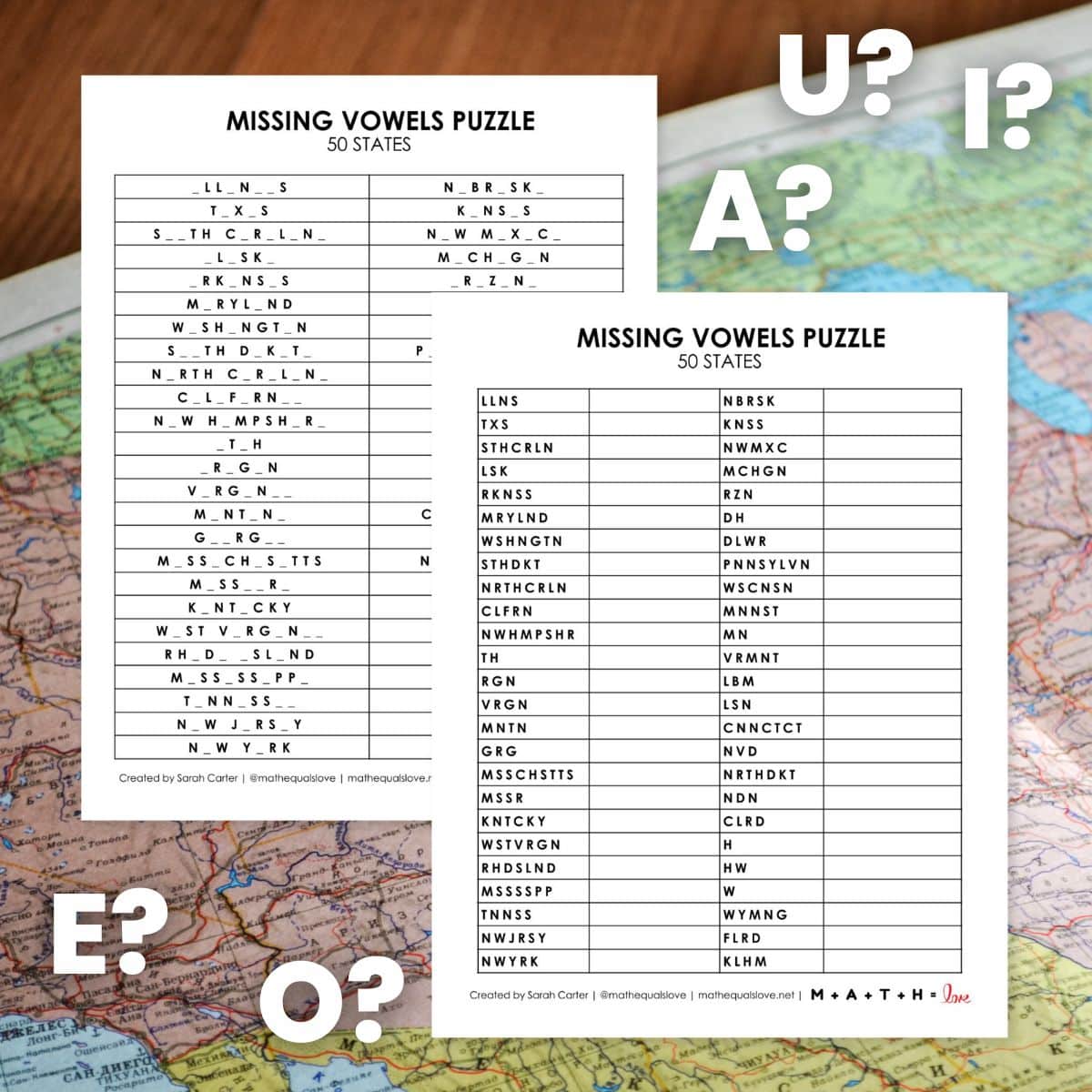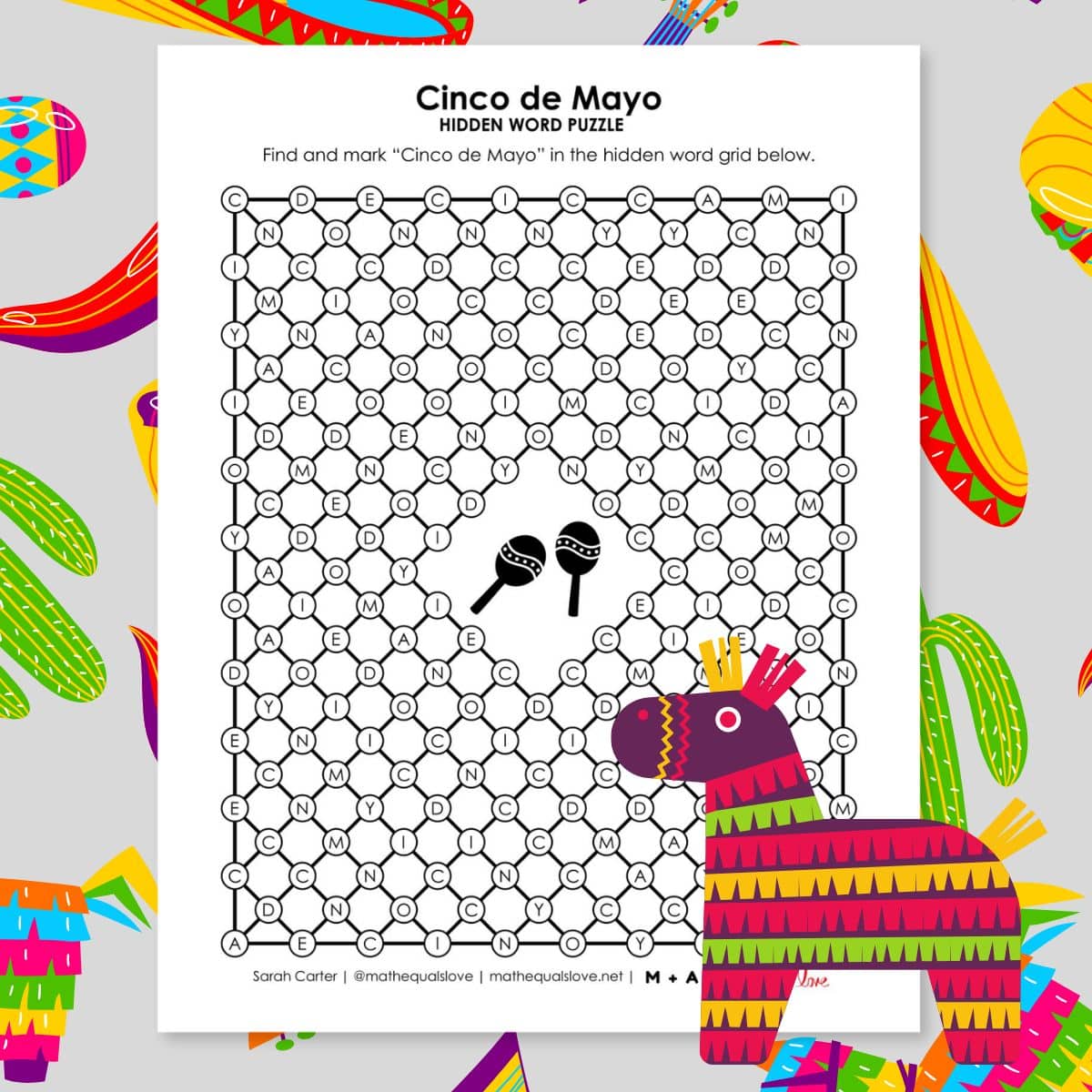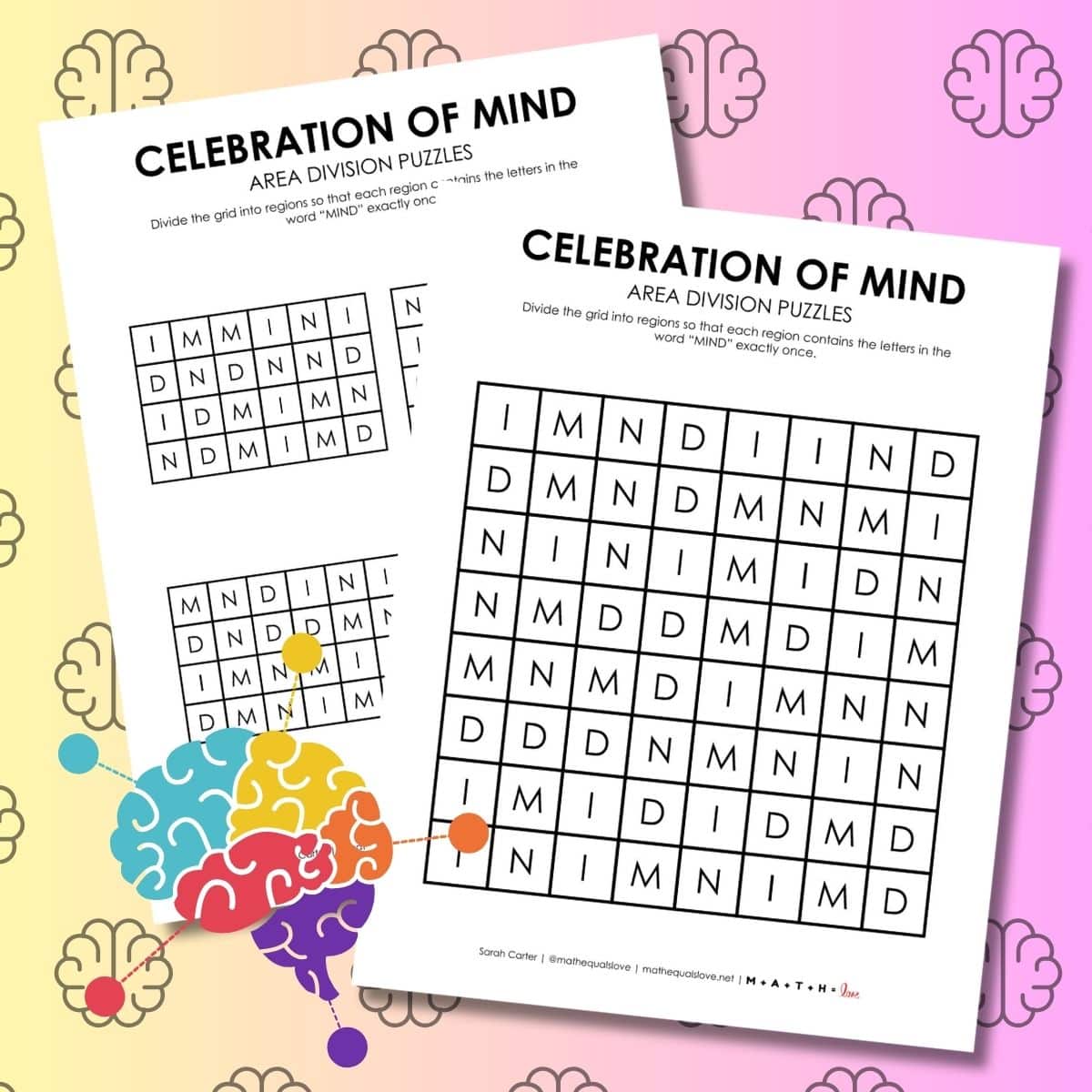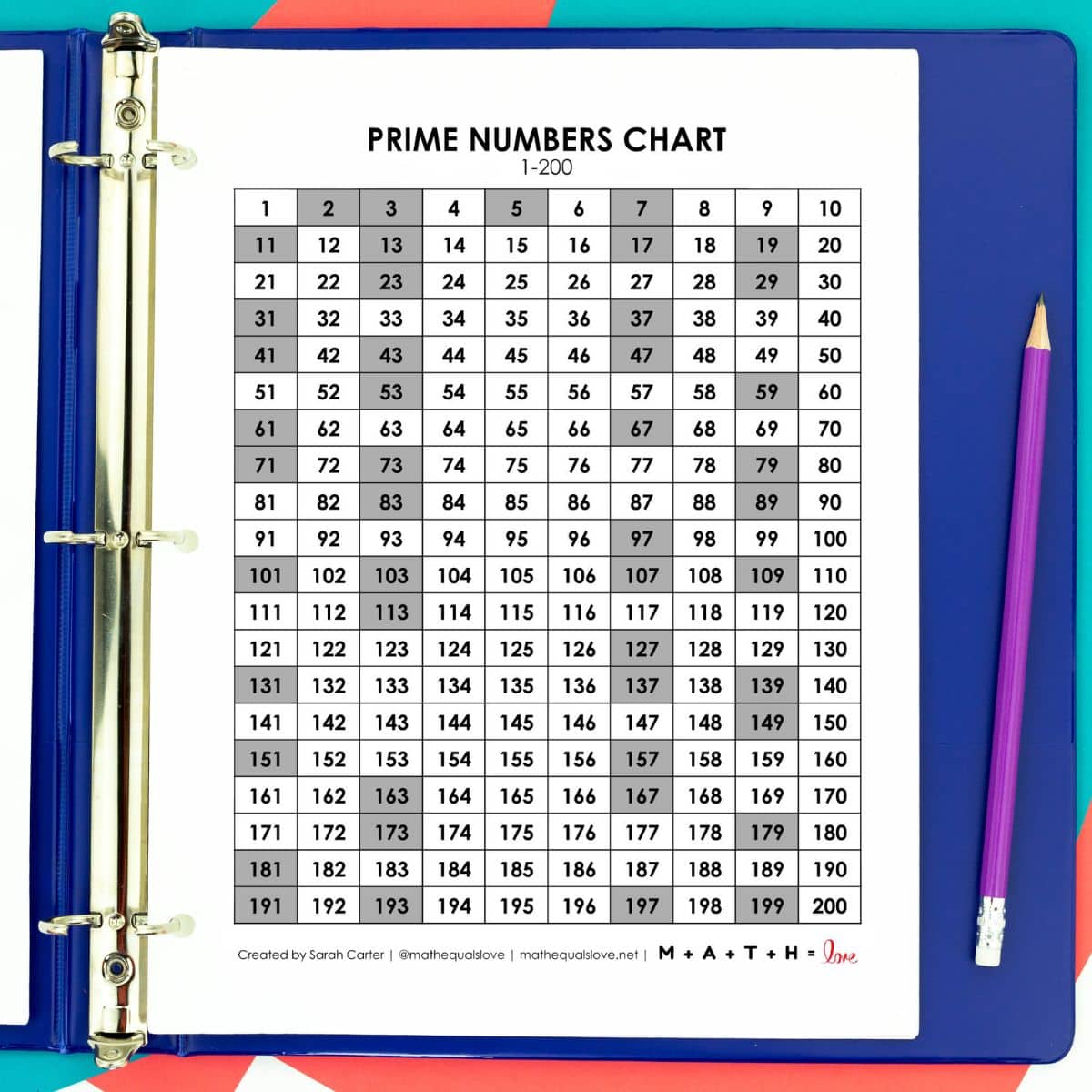The Great Quadrant Guessing Game
This blog post contains Amazon affiliate links. As an Amazon Associate, I earn a small commission from qualifying purchases.
I created The Great Quadrant Guessing Game several years ago to give my Pre-Calculus students some extra practice determining which quadrant of the coordinate plane was represented by two trigonometric facts.
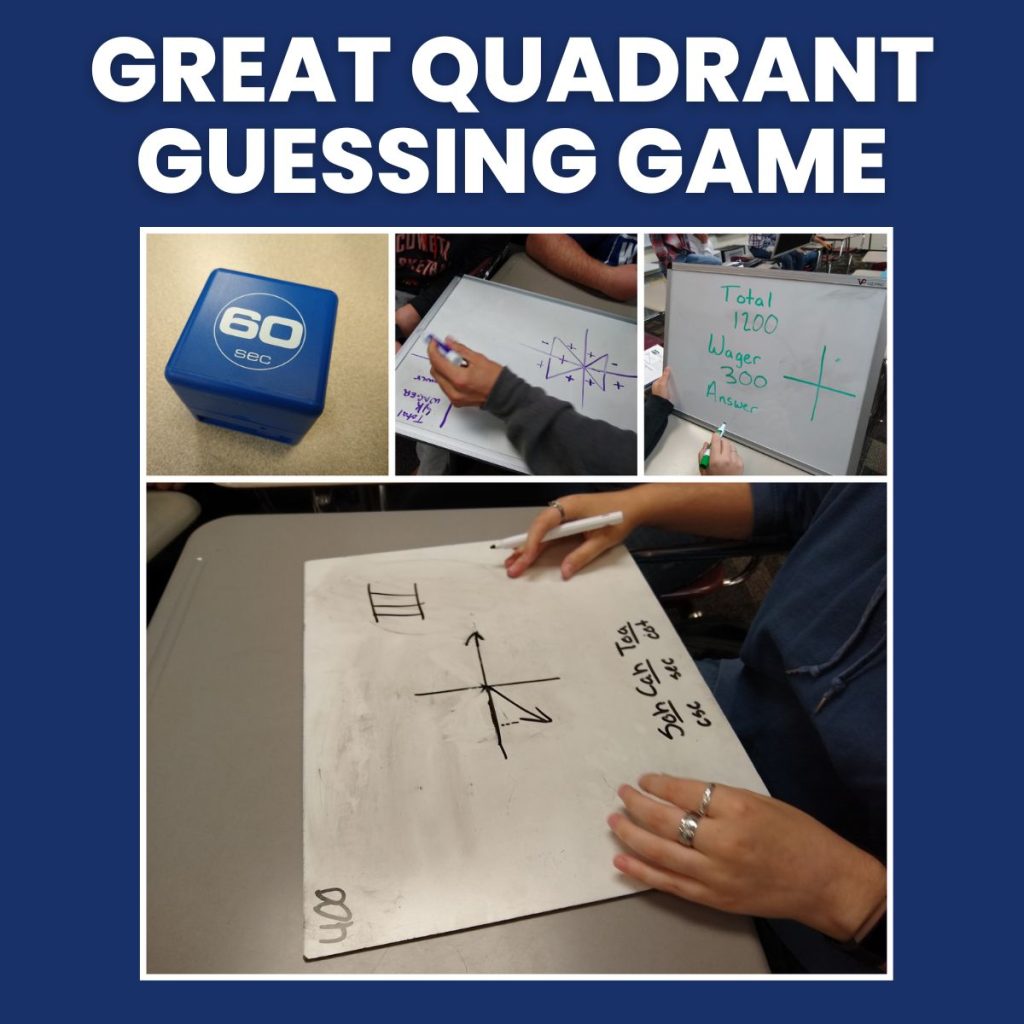
The Great Quadrant Guessing Game
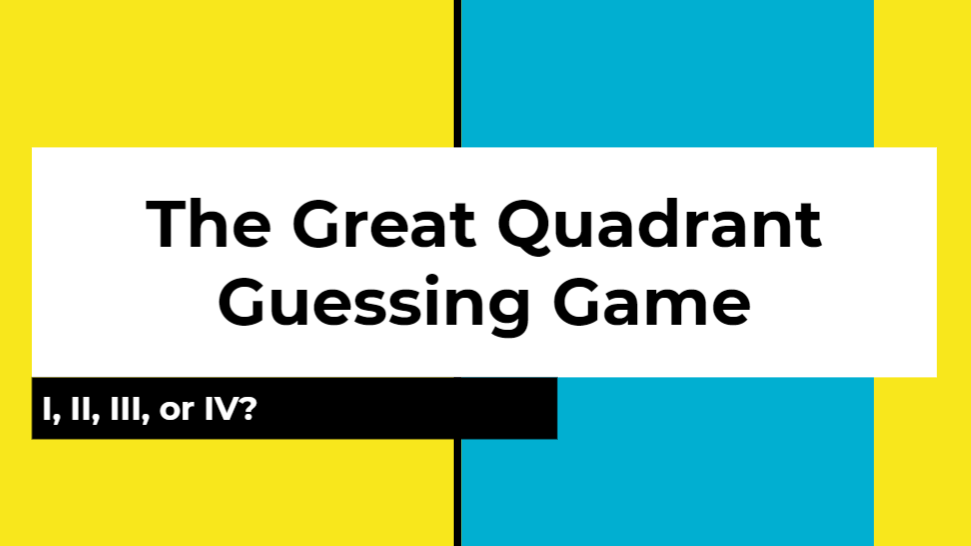
For example, in which quadrant is the sine of an angle positive while the cosine of the same angle is negative?
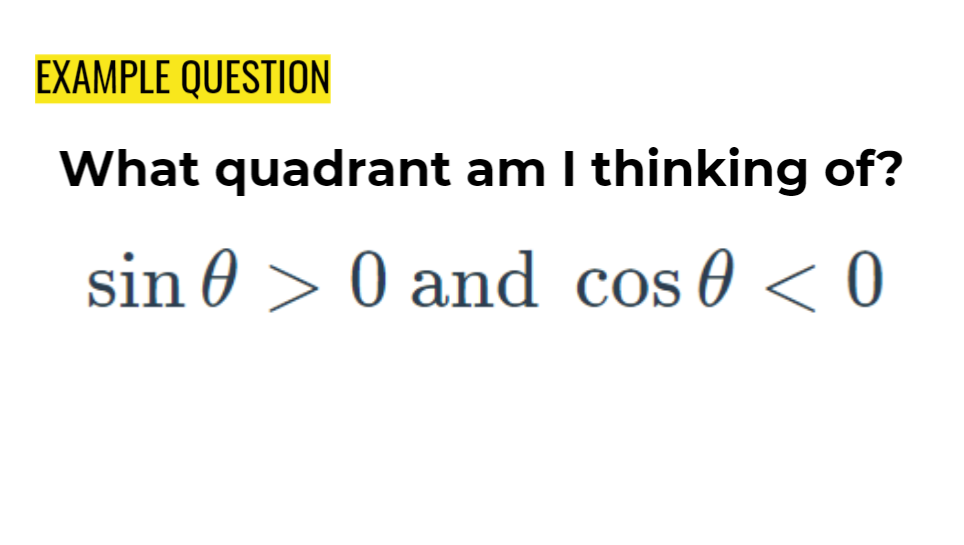
In the past, my students have really, really struggled with this topic during our trigonometry unit. I’ve tried a bunch of different ways of teaching this. In recent years, I have tried my hardest not to give my students the mnemonic device I was taught in school to memorize which trig functions are positive in each quadrant.
I think teaching students this mnemonic device from the get-go does a disservice to students since it cuts down on their actual understanding of what makes a trig function positive or negative in a given quadrant. This is definitely a lesson I am learning the longer I spend in the classroom.
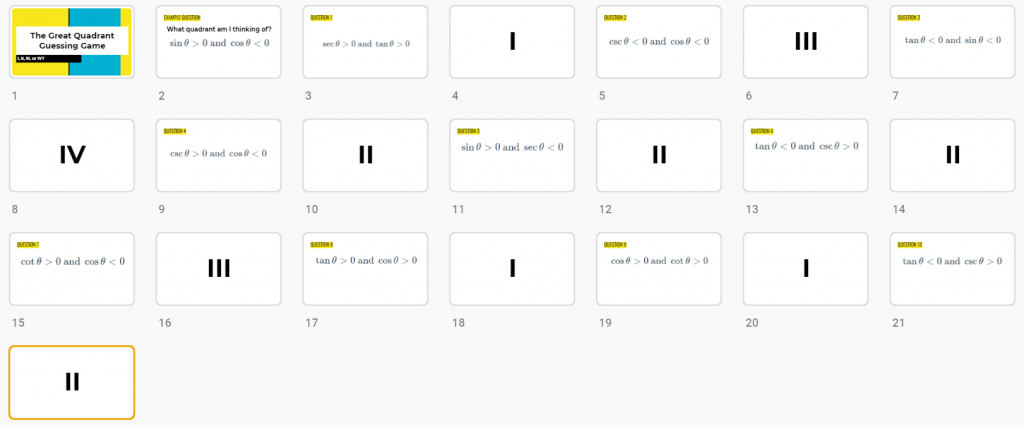
I created a set of google slides for The Great Quadrant Guessing Game which has ten problems for students to work through.
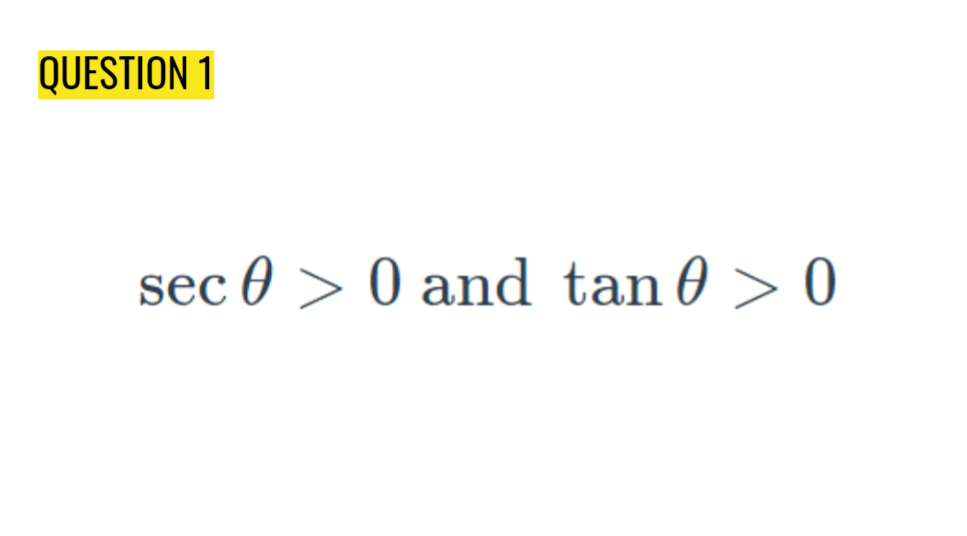
For each question, there is a slide with the question, and a slide that reveals the correct quadrant.
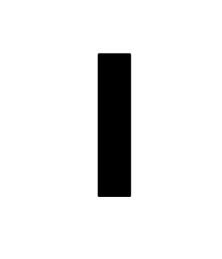
Students were placed in groups. Each group used a group sized dry erase board to do their working for each question. I LOVE these large dry erase boards that my principal purchased for my classroom.
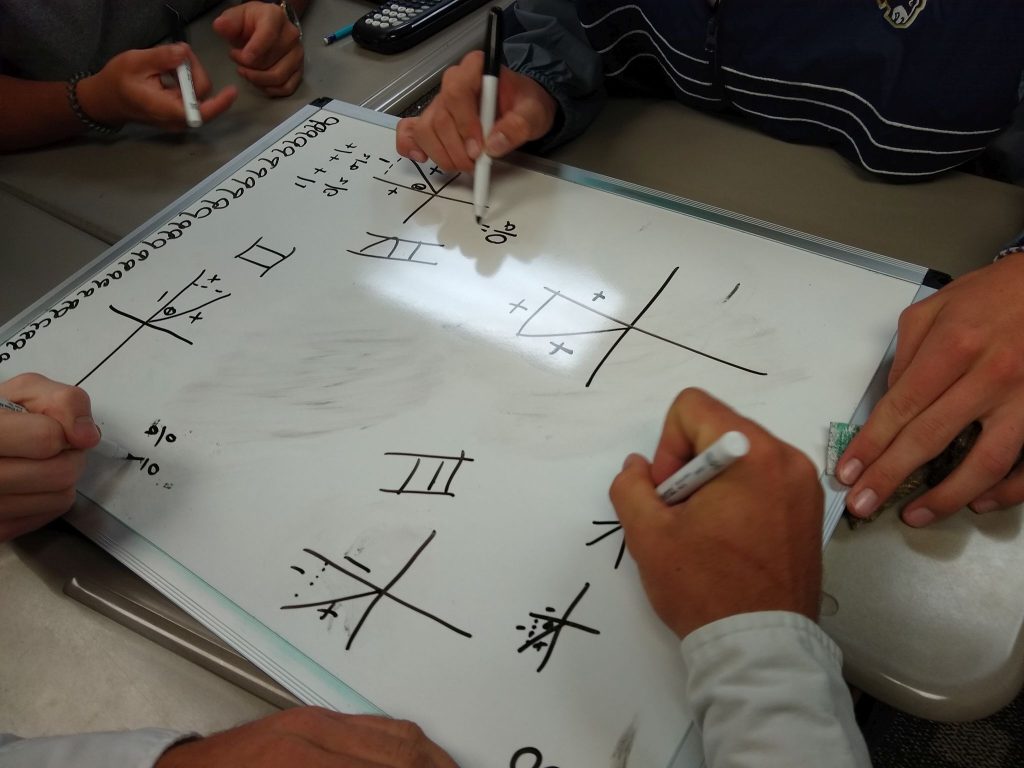
These pictures were taken in 2019, pre-COVID. I miss being able to do groupwork like this with my students!
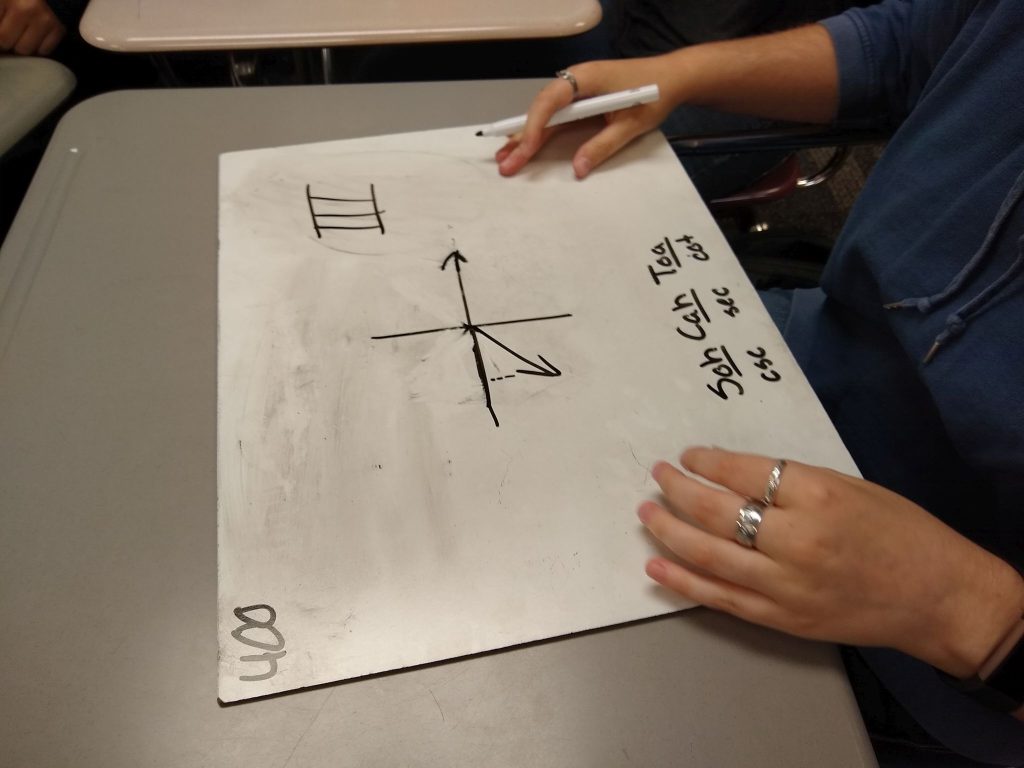
So, where does the game part come in? You could use these slides with any sort of review game structure of your choosing. I chose to do a team wager sort of competition. For each question, groups chose an amount to wager based on their confidence in their answer. If they got the quadrant correct, they gained this amount. If they got the quadrant incorrect, they lost this amount.
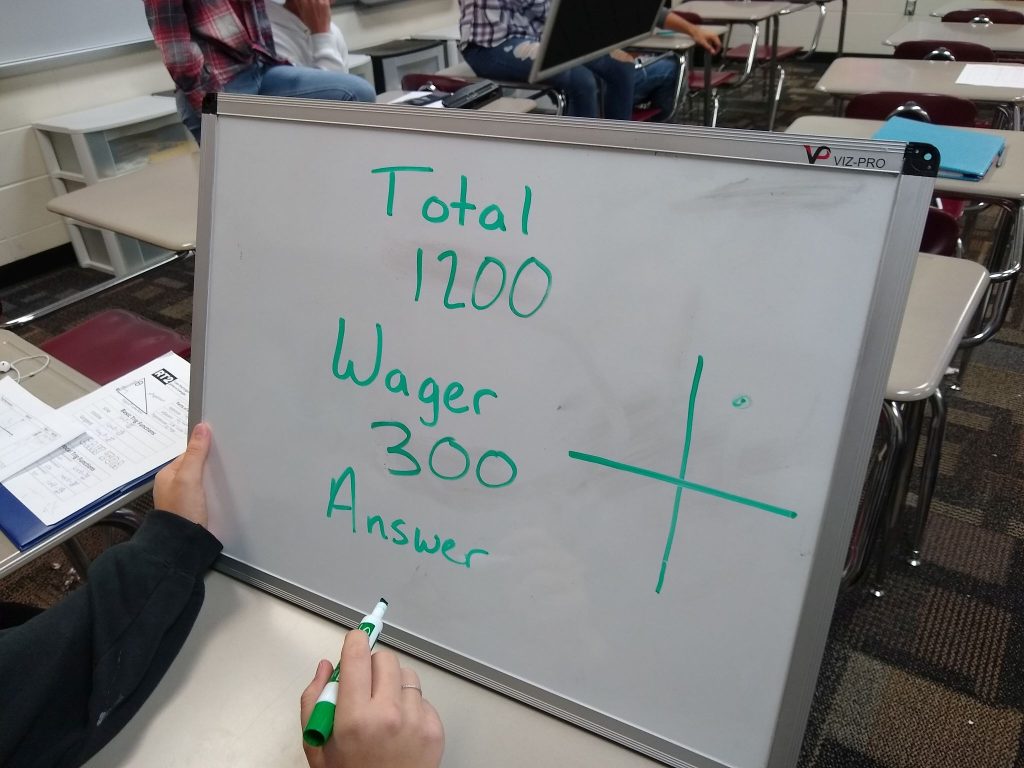
If I remember correctly, I started each team off with 1000 points.
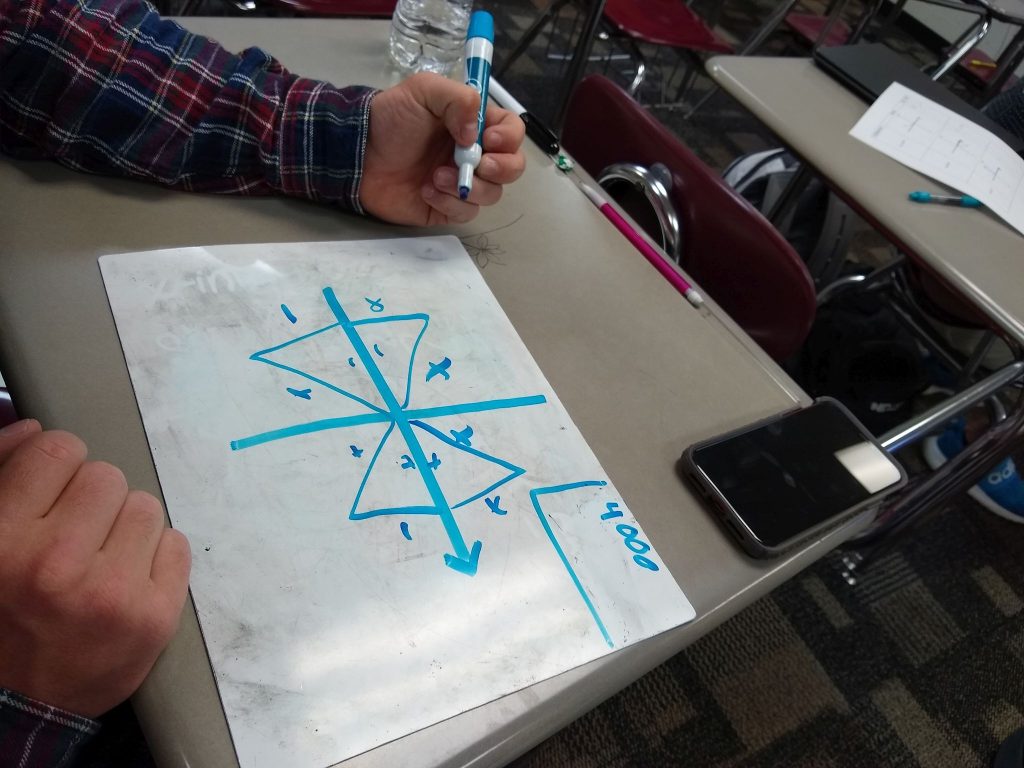
It was very interesting to see the different group’s strategies both in determining the quadrant and in how to wager their points on each question.
Some groups drew a single diagram of the coordinate plane that each student worked off of. Other groups assigned a single quadrant to each person in the group. Then, each individual found the sign of the trig function in their quadrant.
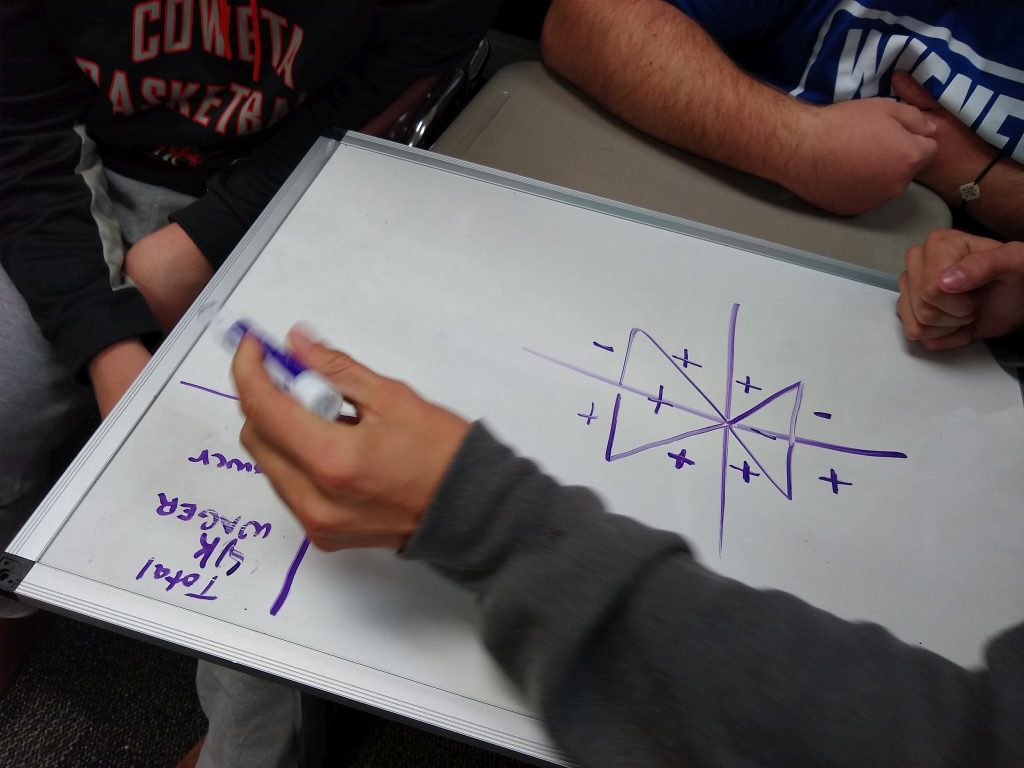
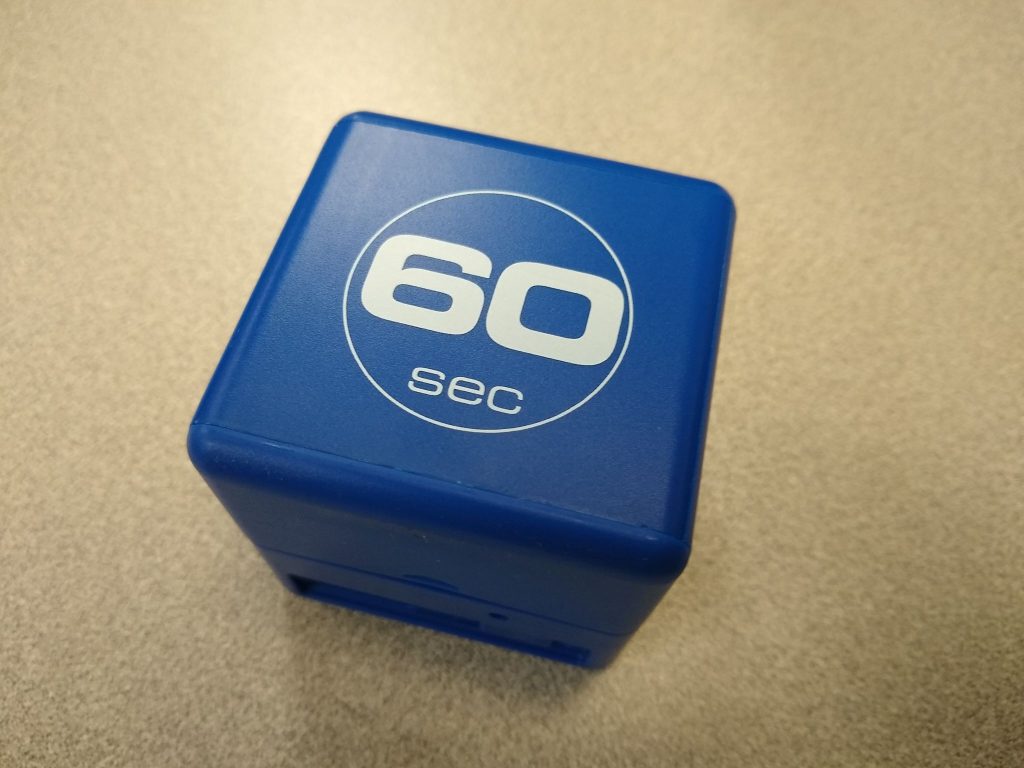
I used my handy dandy cube timer to easily give students 60 seconds to solve each problem. I love this cube timer. I use it all the time for bellwork and games. It has different numbers of seconds written on each side. If you turn the cube on its side, it automatically starts a timer that lasts the number of seconds of the side that is facing up.
After completing our Great Quadrant Guessing Game, we did more of this style of practice problems on Delta Math.

